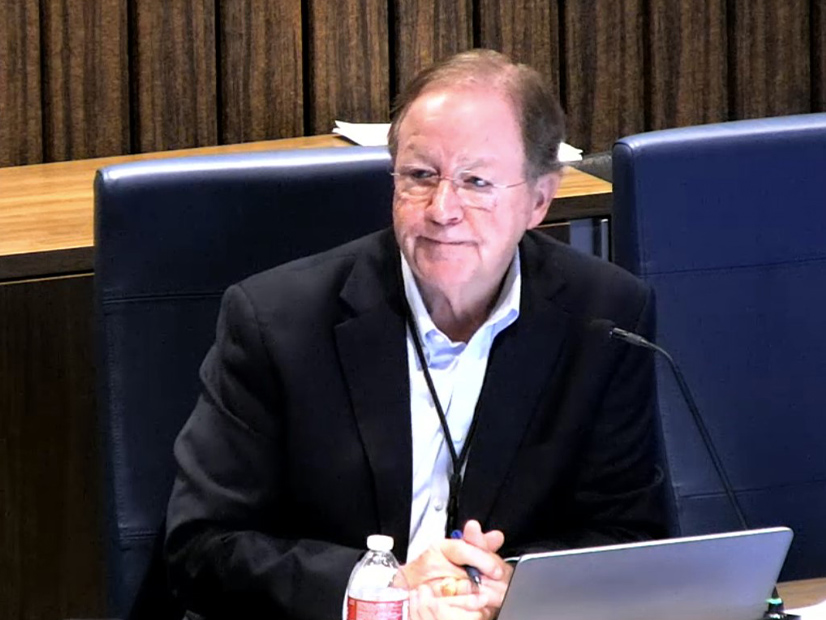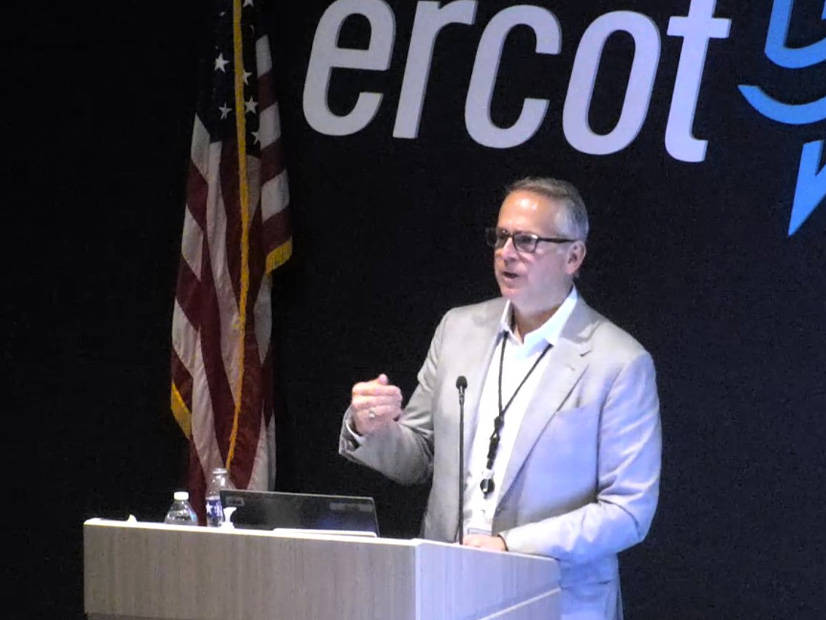Bifurcated NOGRR245 Approved; 2nd Change to Add Details
ERCOT’s long-delayed and now-bifurcated rule change to the Nodal Operating Guide (NOGRR245) that imposes voltage ride-through requirements on inverter-based resources (IBRs) has been partly approved, but much work remains to hammer out a final agreement on its decoupled section.
The grid operator’s Board of Directors endorsed the change Aug. 20, as recommended by the Reliability and Markets Committee and as revised by ERCOT comments. The board also directed that a second, high-priority NOGRR be developed that clarifies the bifurcated hardware modification requirements and exemption standards and processes.
The subsequent rule change will address more details around NOGRR245’s exemption process, including the ability to supplement information if a resource entity makes an exemption request by April 1, 2025; appropriate criteria for some level of hardware upgrades for a “vintage” resource to meet relevant ride-through performance requirements or whether it be granted an exemption; and details about the reliability assessment process.
Under NOGRR245, new IBRs that come online after July 24 must meet relevant parts of the Institute of Electrical and Electronics Engineers’ standard for IBRs interconnecting with the grid by maximizing software, firmware, settings and parameterization to the “fullest extent equipment allows” by 2026. Resource entities must submit by April 1, 2025, a notice of intent to request an exemption if they cannot meet the new requirements. Resources that can meet the new requirements, but not by the deadline, must request an extension.
The board’s approval ends a process that began last year and resulted in months of negotiations between staff and stakeholders representing the Technical Advisory Committee. The committee endorsed NOGRR245 in June with potential modifications that would not become effective until April 2025. (See ERCOT TAC Endorses Rule for Inverter-based Resources.)
The directors later that month tabled the measure to give staff and stakeholders additional time to agree on the rule change by bifurcating or decoupling parts of the exemptions and extension process for legacy assets unable to meet ride-through requirements. (See “NOGRR245 Bifurcated, Delayed,” ERCOT Board of Directors Briefs: June 17-18, 2024.)
“I’m here today to say that we do have a version … the joint commenters do not object to,” ERCOT Assistant General Counsel Andy Gallo triumphantly told the R&M Committee on Aug. 19. He said the goal was to retain the near-term benefits in the TAC-approved version while removing the details and criteria surrounding the exemption process and moving them into the subsequent NOGRR.
ERCOT first filed comments Aug. 12 to clarify and address the joint commenters’ concerns and set the stage for the measure’s bifurcation. Four days later, it filed additional comments that introduce a “notice of intent to request an exemption” concept into the exemption process and make clarifying revisions related to memory upgrades when maximizing equipment ride-through capabilities.
The joint commenters, comprising primarily renewable developers and consumer interests, said they did not oppose ERCOT’s comments. However, they did note key concerns that could affect the development and implementation of new ride-through standards in the second NOGRR.
“I think it’s a very fast timeline. It will take a lot of work to get to consensus,” TAC Chair Caitlin Smith, with Jupiter Power, warned the board. “We’ve been discussing NOGRR245 at TAC for almost a year. We’re looking at the main issues of defining the process of exemptions and how requirements for hardware will apply after maximization. I think there’s some fundamental disagreements on applying the reliability risk systemwide or on a resource.”
“We felt like fundamentally, the principles are still the same that were in the June TAC recommended version,” General Counsel Chad Seely said. “The main issue raised by the joint commenters was kind of the bifurcation process and the hardware issue that we have decoupled, and we’ll have another opportunity to work with the stakeholders through the subsequent NOGRR.”
ERCOT is targeting February for the board’s consideration. It wants to meet the April 1 deadline for submitting the notices requesting exemptions.
Following the board vote, Thomas Gleeson, chair of the Texas Public Utility Commission, said regulators have pushed some “larger policy discussions” to ERCOT that are “more appropriately done at the commission.”
“I think [NOGRR]245, the parts that have been severed out, are [a] good case for this,” Gleeson said. “I’m fine with ERCOT moving forward with urgent status on this, but I think we should have a discussion at the commission [whether] this is more suitable to be done through a rulemaking. And so I don’t have the answers to this at this time, but I think we need to have those discussions.”
Gleeson said he has had sideline discussions with ERCOT leadership, several board members, PUC executive staff and TAC leadership to determine where those policy conversations should be held. He said he will look to stakeholders and others to “help inform where we end on this.”
New Peak Demand Mark
ERCOT CEO Pablo Vegas flashed his prognostication skills, warning that Aug. 20 “could be one of the peak periods that we will experience this summer.”
He was right. The grid operator set an unofficial new mark for peak demand that evening when it averaged 85.56 GW during the hour ending at 6 p.m. That broke the record set last August at 85.51 GW, a minimal 0.06% increase over last year’s peak, which was 6.6% higher than 2022’s mark.
Vegas said that without the heat dome that sat over Texas much of 2023’s summer, operating the grid has been a “different experience” this year — even as excessive heat warnings led to temperatures as high as 113 degrees Fahrenheit (in Abilene) in the state, according to the National Weather Service.
“The weather profile for the summer … differed significantly,” he said. “We’ve also seen the resource mix continue to evolve. We’ve seen significant additions of energy storage resources, solar resources and wind resources, with a few additions also on the thermal side. … All of that has helped to contribute to more consistent, less scarcity conditions during the peak periods of the summer, like we experienced last year.”
Solar resources contributed almost 13 GW of energy during 2023’s demand peak. This year, they provided 20.8 GW of energy Aug. 20, just short of the 20.83-GW record for solar. Batteries provided a record 3,927 MW at 7:35 p.m., when solar was dropping.
When “the solar ramp comes down, the wind ramping back up is one of the more significant variables that we look to,” Vegas said.
Over the last 30 days, according to Grid Status, wind resources have averaged 17 GW to 18 GW at midnight, dipping to 7 GW during the middle of the day.
ERCOT Extends MRA Timeline
ERCOT has extended the timeline for proposals to must-run alternatives to its reliability-must-run contract for three retiring CPS Energy units, from Sept. 9 to Oct. 7.
Seely said staff received fewer than 10 responses to its request for proposals, “which is not a good sign, as far as the industry being engaged potentially to try to respond to this reliability situation.” Two previous ERCOT requests for additional capacity have failed. (See “2nd DR RFP Canceled,” ERCOT Board of Directors Briefs: June 17-18, 2024.)
The grid operator issued the RFP on July 25, saying CPS’ plan to retire three aging coal-fired units, with a combined summer seasonal net maximum sustainable rating of 859 MW, would have a “material impact on identified ERCOT system performance deficiencies.” ERCOT staff have said the units’ retirement would load existing transmission facilities above their normal ratings under pre-contingency conditions. (See ERCOT Evaluating RMR, MRA Options for CPS Plant.)
Staff amended the RFP’s governing documents and issued a market notice Aug. 21. The timeline extension likely pushes the board’s consideration to December.
“We are going to amend the governing documents, which is consistent with the scope, because we really are looking for cost-effective alternatives that can be competing against the RMR resources,” Seely said.
Complicating the situation is the $57 million CPS says it will take to inspect, repair and prepare Braunig Power Station’s three units to remain in service past March 2025. The 54-year-old Unit 3 — the largest, at 412 MW — will cost $22 million alone.
ERCOT staff will continue to work with CPS on the pre-RMR costs, including a methodology on lost opportunity costs, and prepare additional reliability analysis to determine the probability of increased risk without the Braunig units. They will update the PUC during its Aug. 29 open meeting.
CPS is upgrading its transmission infrastructure to relieve a constraint south of San Antonio, but the work isn’t expected to be completed until the middle of 2027.
CFO Taylor to Retire
The board and ERCOT staff recognized CFO Sean Taylor, who has announced his retirement after more than 11 years of employment at the grid operator and more than 25 in finance.
“His leadership has helped to ensure the financial health of ERCOT throughout many consequential periods of time. Thank you for putting us in a fantastic position. … We’re going to miss you,” Vegas said.
Taylor joined the ISO as controller in 2013 from the Lower Colorado River Authority. He was named CFO in 2019 and chief risk officer this year. Previously, Taylor was a consultant performing mergers and acquisition advisory services at PricewaterhouseCoopers in New York City.
Directors OK $272.6M Project
The board unanimously approved a $272.6 million regional transmission project in Central Texas that addresses thermal violations and was endorsed by TAC during its July 31 meeting.
Staff said the project will improve long-term load-serving capability, is the least-cost solution, and requires the least amount of a certificate of convenience and necessity for the options that meet all ERCOT and NERC reliability criteria. (See “$272.6M Project Endorsed,” ERCOT Technical Advisory Committee Briefs: July 31, 2024.)
The directors also approved a pair of revision requests that were met with opposing votes at TAC. (See “Changes to CDR’s Methodology,” ERCOT Technical Advisory Committee Briefs: July 31, 2024.)
NPRR1219 was opposed by the consumer segment over concerns about using effective load-carrying capability for renewable resources and a rushed process and potential implications of changing the reporting methodology. The protocol change modifies the methodologies for the capacity, demand and reserves report’s preparation and incorporates a report release schedule. The NPRR also includes new definitions to support the methodology changes and revisions to address outdated terms and add clarity to the methodology descriptions.
The cooperative segment opposed NPRR1230, which establishes a shadow price cap for congestion affecting interconnection reliability operating limits.
The board’s consent agenda included four other NPRRs, an Other Binding Document revision request (OBDRR), a change to the Planning Guide (PGRR) and two modifications to the Verifiable Cost Manual (VCMRRs) that will:
-
- NPRR1217: remove the requirement for load resources and emergency response service resources to be deployed with a verbal dispatch instruction from ERCOT.
-
- NPRR1231: provide clarifications and improvements to the firm fuel supply service product.
-
- NPRR1233: add a flat fee for federally owned generation units and adjust the weatherization inspection fee for transmission service providers.
-
- PGRR106: clarify which transmission projects are included in the Transmission Project Information and Tracking report.
-
- VCMRR040: remove the need for ERCOT to buy an annual coal price index subscription for use in calculating the quarterly coal fuel adder. The revision describes a methodology for a qualified scheduling entity to submit “actual coal fuel adders,” similar to the current process for natural gas resources.





